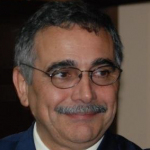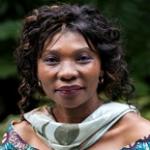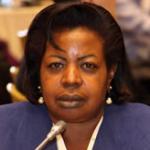SDG 15 specifically calls on the international community to “protect, restore and promote sustainable use of terrestrial ecosystems,sustainably manage forests, combat desertification, halt and reverse land degradation and halt biodiversity loss”. Although SDG 15 can be narrowly perceived as primarily environmental, it is in fact a critical measure of overall progress against the 2030 Agenda, as well as a key enabler of many other goals and targets. It is central to providing environmental support services critical to ensuring, amongst others,safe and sustainable water supplies and mitigating climate change. Importantly, it is also central to the lives and well-being of many indigenous communities, pastoralists and others traditionally viewed as excluded, marginalized or at risk of being left behind.
An examination of progress towards individual SDG 15 targets should be data driven and focused. It should also take into account obstacles, challenges, enablers and interlinkages through various crosscutting lenses deriving from social and economic dimensionssuch assustainable livelihoods, migration, land tenure, empowerment of rural women and smallholder producers, urban-rural linkages, climate change, valuation of biodiversity and ecosystem services, the rights and knowledge of indigenous peoples, insecurity and governance, as well as the 2030 Agenda principles of inclusion, interdependence and leaving no one behind.
Governments and other actors seeking to implement the SDG 15 targets, especially those with 2020 deadlines, will need accelerators—including in the realms of public and private finance, capacity, science and technology— in order to be successful.
Proposed guiding questions:
- How can we change the narrative of how we approach SDG15 to capture a more holistic accounting of the value of nature and its ecosystems, and what role can governments play?
- How can we improve the indicator set used to track progress towards SDG 15, given that several are Tier III and others Tier II?
- What are the evidence-based conservation solutions – including recent scientific and technological advances as well as effective community management and partnerships – that deliver genuine impact and can be scaled up or replicated for success?
- Which are the most critical interlinkages with other goals and targets in terms of co-benefits or trade-offs? How can they be leveraged towards progress?
- Who are the furthest behind and who is at risk of being left behind for this SDG?
Chair:
- H.E. Mr. Jerry Matthews Matjila, Vice-President of ECOSOC
Presentations:
- Ms. Heather Page, Sustainable Development Goal Monitoring Section, Statistics Division of UN DESA
Keynote speaker:
- Mr. Simon Levin, the James S. McDonnell Distinguished University Professor in Ecology and Evolutionary Biology and Director of the Center for BioComplexity at Princeton University
Moderator:
- Mr. Rene Castro, Assistant Director General of Climate, Biodiversity, Land and Water Development, FAO
Panellists:
- Ms. Anne Larigauderie, Executive Secretary, Intergovernmental Platform on Biodiversity and Ecosystem Services (IPBES)
- Ms. Cécile Bibiane Ndjebet, Director African Women's Network for Community Management of Forests (REFACOF), Cameroon
- Mr. Roy Brouwer, Professor, Environmental Economist, Department of Economics at the University of Waterloo, Canada
- Ms. Martha Rojas-Urrego, Secretary General of the Ramsar Convention
Lead discussants:
- Ms. Gertrude Kabusimbi Kenyangi, Executive Director, Support for Women in Agriculture and Environment, Uganda
- Ms. Jill Blockhus, Director of International Partnerships, The Nature Conservancy
- Mr. Chiagozie Chima Udeh, Executive Board Member, Plant-for-the-Planet Foundation, Nigeria (Major Group of Children and Youth)
Followed by interactive discussion
 Welcome to the United Nations
Welcome to the United Nations








